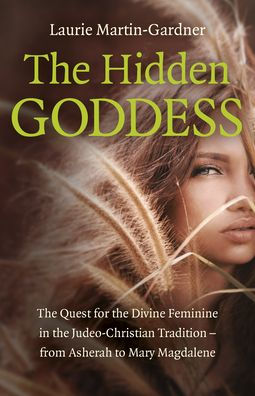The Hidden Goddess examines the ancient Judeo-Christian legacy along with more recent archeological finds to shed some light on a controversial topic-the feminine divine in monotheistic faiths. Translation of texts that were only discovered in modern times point to a period of time in ancient Judea when not only did monotheism exist side by side with polytheism but Judaism also absorbed parts of the neighboring religion, including a Goddess. Eventually as we know the Goddess was removed and most of the vestiges of her existence were covered up leaving the faithful to develop other forms of feminine divine presence within the confines of a patriarchal, one God religion. Martin-Gardner traces the varying ways that the faithful have repeatedly brought this feminine presence back into both Judaism and Christianity. The author has backed her findings with Biblical and Rabbinical texts, ancient rediscovered writings, and the work of scholars.
Yahweh, or God, as he's more commonly called, was a jealous God competing with neighboring pantheons. Through acts of war and assimilation Yahweh assumed the attributes of the neighboring God Baal and took on his wife, Ashereh. Baal´s priests were slaughtered but not those of Ashereh. It appears from the archeological record that God and Ashereh were worshiped in the temples together. If this sounds far fetched, it's because until fairly recently is was long forgotten. A minister who studied these texts as part of his divinity school told me that the faithful now do not want to know this. The Old Testament stories of David and Solomon and their wives of other faiths makes more sense with the additional information found in the Ugritic tablets. Suddenly, these scenes of destroying and putting back altars and Ashereh poles are the ancients version of the culture wars. The push for domination by a monotheistic God and the backlash from a population unwilling to give up their Goddess takes place over centuries until the final One God stands alone.
From here the story of the divine feminine in the Judeo-Christian world follows the development of Lilith and Eve and the differing stories in Jewish and Christian writings; the emergence of the Shekinah in the Jewish tradition; and Wisdom in the Gnostic/Christian paths as a physically manifesting feminine appearance of God. As these figures fade into history, the divine feminine re-emerges in the form of Mother Mary and Mary Magdalene. Mother Mary is portrayed as being not so well treated by her son and this is one moment where the author's POV comes across strongly. Surprisingly, there's something new to say about Mary Magdalene-mainly that researchers have determined she was confused with other women in the Bible and badly maligned. She was never a prostitute. Her role as a founding mother in the Church has been overshadowed by a mistaken reading of the Bible which was spread by a 15th century Pope. While the intention wasn't to erase her role in Christianity, her tainted reputation played into justifications for the exclusion of women in church leadership and thus has implications for female church leadership today.
Some readers of faith may find this book shocking or heretical but a couple times where I questioned the author and did my own investigation, I found supporting evidence in the religious press. There is a feminist point of view which may occasionally come off as heavy handed. Most of the time the story is told clearly with nods to where you can find more information. Thought-provoking reading that you can finish in an afternoon and mull over for a lifetime.
Recommended.
~review by Elsie Smyte
Author: Laurie Martin-Gardner
Moon Books, 2020
104 pp, $12.95

